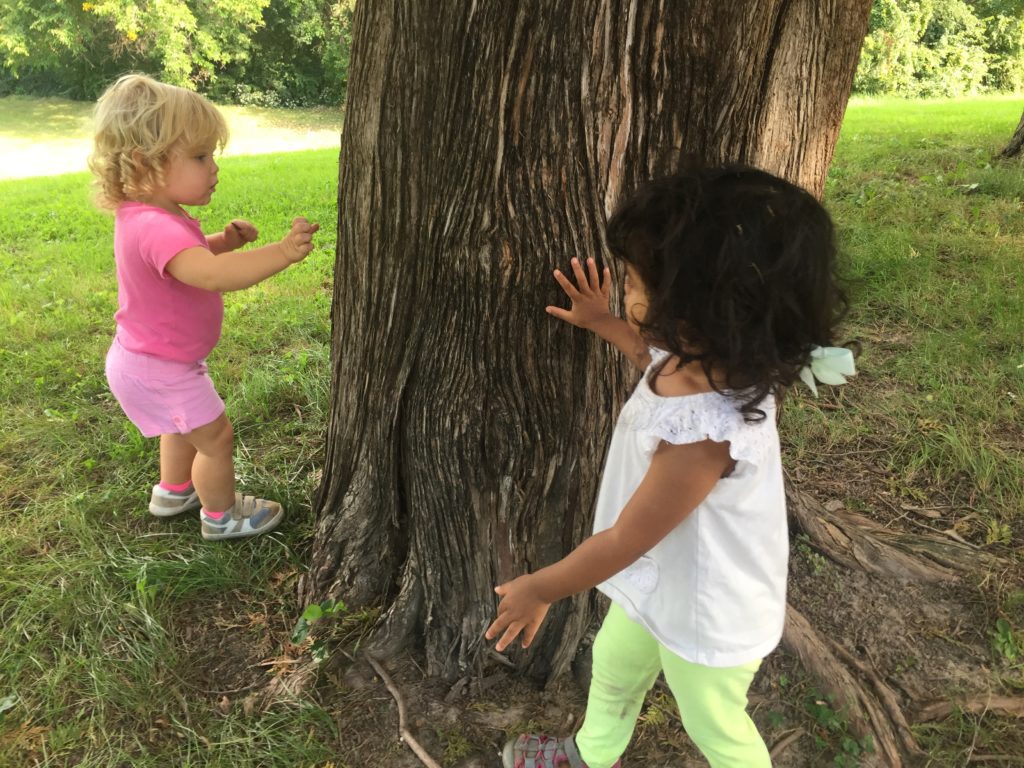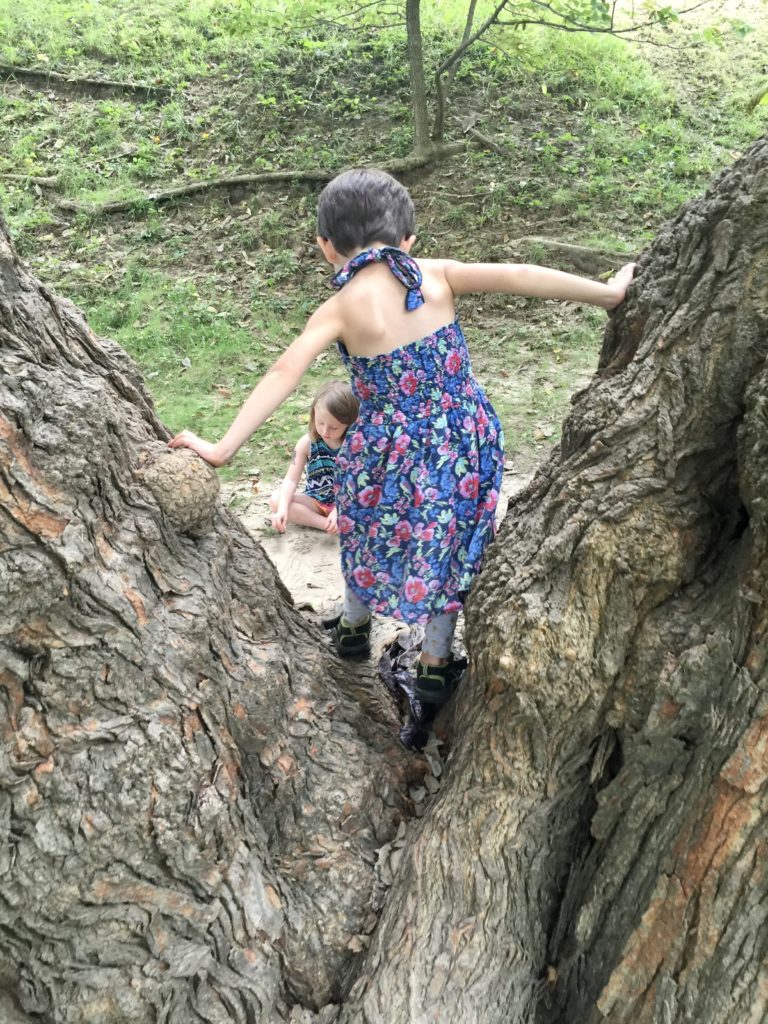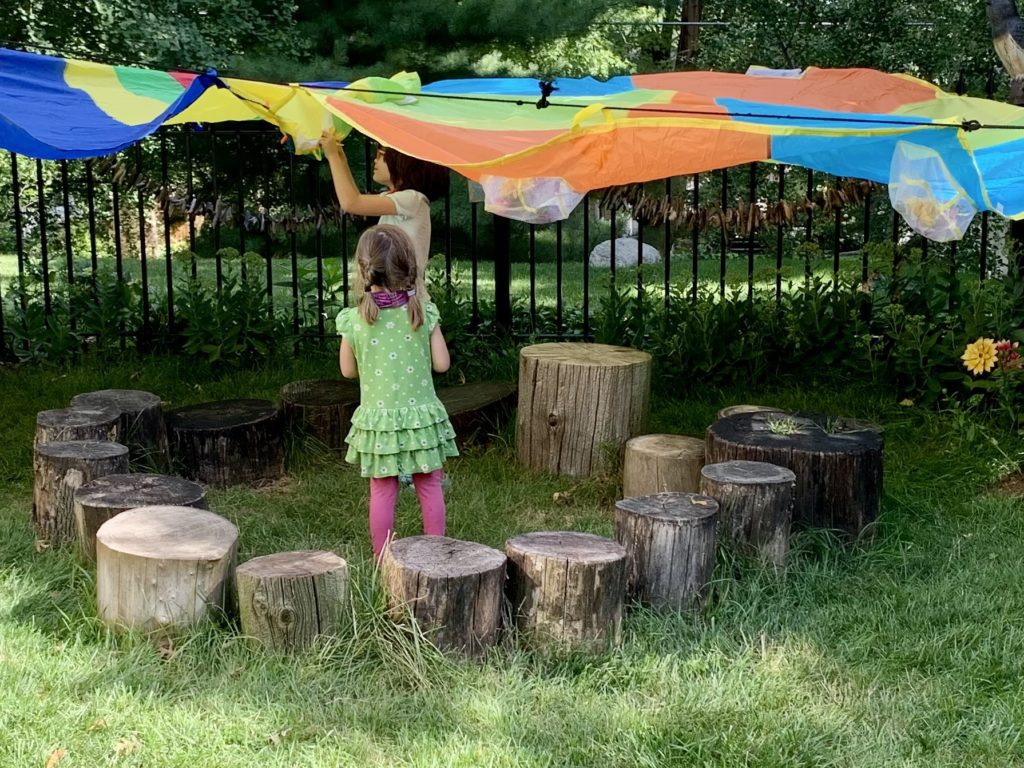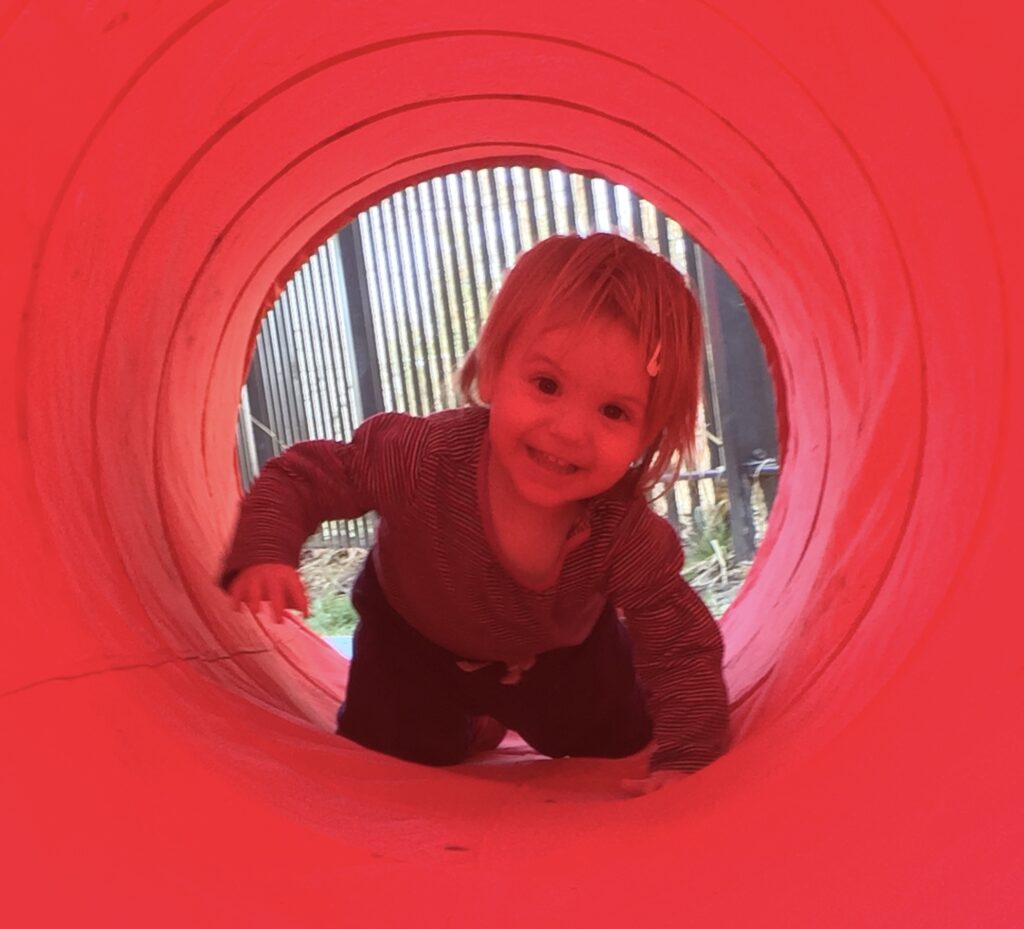Lessons From An Obstacle Course
"Go around the tree, through the tunnel, over the rocks, under the parachute and onto the swing. Then throw a beanbag through the hula hoop and run and touch the fence. The first person to do that WINS!"
I listen as five-year-old Juan walks his eager friend through the steps of the obstacle course he has just created.

When parents think about early math skills, they often think about numbers—including number recognition and counting. But spatial reasoning is another important aspect of early math learning.
Juan has kicked off our morning of math learning with a burst of spatial vocabulary!
Words like around, through, over, under, above, below, between and beside describe where things or people are in space.
Obstacle courses are a great way for children to learn, hear and use spatial language while developing their spatial skills. Obstacle courses also teach sequencing, memory and following directions. Best of all, kids LOVE them!

When designing your own obstacle course, consider the elements that will make it both fun and challenging.
Try out these options:
- Something to jump over or into such as rope, pool noodles, chalk lines or hoops. I often use chalk to draw shapes such as circles, squares, rectangles or triangles just to sneak some more math into our day. As children start to identify shapes, they are building the foundation for geometry.
- Something to climb over. When we're indoors, we use pillows. When we're outside, we climb over the picnic table or up the slide. The slide is a feature in many of our obstacle courses.
- Something to weave around and between. We often use cones or buckets, recycled two-liter plastic bottles filled with water or natural landmarks such as trees, bushes and gardens.
- Something to crawl through or under such as tunnels, parachutes or boxes.
- Something that requires a bit of balance or care when navigating such as a curved rope, river rocks or tree stumps.
- Something to run to, such as a fence, a tree or a door.

When older children are here after school, we often use a stopwatch to time how long it takes to complete the course. This exposes our children to data analysis and record-keeping.
Some students may want to use their drawing skills to create a map of the obstacle course. Keep clipboards and pencils nearby because this activity catches on quickly!
You can add more math learning opportunities by counting the hoops or cones as children go through or around each one.
You can measure the distance between cones or stones—or simply use spatial language to describe the distance, using words such as closer together or farther apart.

Obstacle courses are also great for developing gross-motor skills. Include activities such as crawling, jumping, skipping and hopping. If your outdoor area has natural slopes and uneven terrain, these areas are perfect for fostering the development of early gross-motor skills.
We all see the need for self-regulation in young children. Occupational therapists often use movement to support physical and mental regulation and increase a child's attention span, focus and alertness. That's reason enough to create a math curriculum that involves an obstacle course!
An obstacle course may look like play, but it's chock full of learning opportunities. When we take the time to explain how activities like these can support early childhood learning and development, parents and administrators begin to develop a deeper understanding of our early childhood curriculum.
Ready to take a deeper dive into spatial learning? Check out the Ready Child activity, Obstacle Course Math, for tips on setting up your own backyard obstacle course. The Morning Routine Game is another activity that could be turned into an obstacle course indoors and make your mornings a wee bit easier. Give them a try and keep on playing!